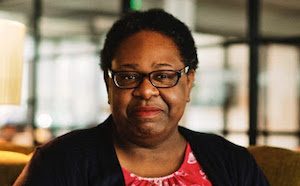
After more than 35 years of operation, TBI is closing its doors and our website will no longer be updated daily. Thank you for all of your support.
Diversity: Ensuring a snowball effect on accessibility
Deborah Williams looks at how the pandemic has made some events more accessible and urges the industry to maintain momentum
It’s that time of year where I sit down and reflect on another 12 months of pushing for greater diversity across our industry.
Outwardly, 2021 was another year of high-profile commitments from platforms, broadcasters and producers in the UK and globally – but the reality is the jury is still out. We’re still looking for some meat on the bones and to have a better idea of the impact that all these commitments are having.
So that means planning for another year of analysis of new data sets, starting with the Creative Diversity Network’s (CDN) own fifth annual Diamond data report, due in February. It may well indicate not only the most recent impact of COVID-19 on UK television production, but also provide a further amount of longitudinal analysis of any progress, or regression.
Looking back on last year, one positive in a difficult 12 months was the opportunity to work with the Edinburgh International Television Festival. As the official accessibility partner, we were able to deliver much greater provision for deaf and disabled people to access the full range of festival content. This included British Sign Language interpretation and live captioning for all 60 sessions that took place online. I was heartened to receive many messages and calls from people around the world who were watching it saying, ‘thank you – for the first time I can access the festival’.
Disability was a central theme of the entire festival, beginning with writer Jack Thorne’s MacTaggart, which provided an eye-opening – and soul-searching – picture of how disabled people are represented within the UK TV industry.
While many festivals in 2021 remained online, it was fantastic to see events restarting in person, such as Series Mania, where we were invited to present a session about Diamond. Looking forward, I am excited about the return of events such as Realscreen, NATPE Miami, Berlin, MIPTV and Edinburgh, amongst others.
But what does this return to normality look like in terms of accessibility and inclusivity? What does it mean for the many talented deaf and disabled creators and producers of content, as well as those of us working in the policy space trying to address and remove systemic and structural barriers?
Well – for me, a lot of work! I will be collaborating with other specialists and experts to bring the model that we piloted this year into fruition for other events. Imagine what it would be like to attend any of these global events and be unable to access the content, to network or to pitch, to know what the world is looking for in unscripted or high-end TV dramas. Imagine what that must feel like and then think about what you would need to have in place to fully participate.
Many people have been able to work remotely through the pandemic, changing their working patterns and fitting in more care responsibilities. Globally, reasonable adjustments have been put in place as non-disabled people have been enlightened by realising how flexible working can function for this industry. These need to stay.
Disabled and deaf people have long been asking for this flexibility but have usually been told it was impossible. But now the risk is that rather than empowering diverse talent, these new ways of working will simply be the preserve of non-disabled people while disabled people continue to be shut out. That must not happen and cannot happen.
So, what can you do? Simple, small actions like paying for disabled people to attend festivals, or at least providing reduced or complimentary passes. Subtitle content that is shared and shown at sessions, and make sure any event you organise is properly accessible and inclusive by asking for disabled people’s input as you plan them. Easy, basic stuff, which when added together can have a real structural impact.
Optimistically, I have to think that the dawn of disability inclusion has started in our industry. It is on the rise and it is not going to stop. It is the future of global television and the future we all deserve.
Deborah is executive director at the UK’s Creative Diversity Network and has worked in arts, culture and the creative industries for more than three decades



